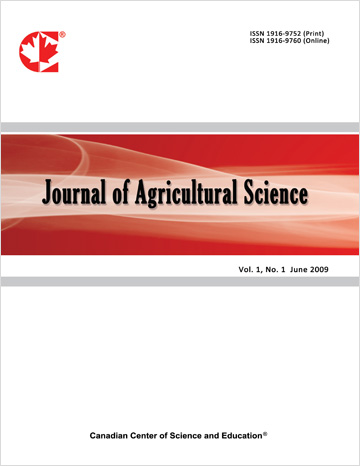Crude Aqueous Root Extracts of Solanum spp. Show Nematotoxic Activity Against Meloidogyne incognita
- A. A. Ferreira
- A. S. Ombredane
- R. R. Pimentel
- P. D. S. Ferreira
- J. E. Cares
- J. R. P. Santos
- C. Furlanetto
- T. L. Rocha
Abstract
Brazilian crops are strongly affected by the root-knot nematode Meloidogyne incognita, which compromises food production and causes serious economic losses around the world. Synthetic nematicides are still some of the main control strategies for this pathogen, despite the high risk to human health and the environment. Therefore, sustainable biotechnology represents a viable alternative for nematode control. Plants of the Solanaceae family are present in several biomes and are a source of secondary metabolites of various chemical classes. In this context, the nematotoxic effect of crude aqueous root extracts (CAREs) of three Solanum species was investigated: Solanum americanum, S. subinerme and S. lycocarpum. CARE showed high nematicidal activity (94.6±9.2% mortality, p ≤ 0.001) against second-stage juveniles (J2) of M. incognita, even after heating to 50 °C. These CAREs also inhibited hatching of juveniles (98.4±0.7% of mortality, p ≤ 0.001) in addition to presenting a mean lethal dose of 336 μg ml-1. No toxic activity was observed against non-target organisms, such as fungi (Trichoderma harzianum and Trichoderma asperellum), yeast (Candida maltosa), nitrogen-fixing bacteria (Bradyrhizobium diazoefficiaens, B. japonicum), two strains of Azospirillum brasilense, AbV 5 and AbV 6 and Bacillus [2538 Ba]. Bioassay performed in a greenhouse demonstrated that CAREs of these species were effective in reducing the number of egg masses and galls (> 85%, p ≤ 0.0001), and did not show a phytotoxic effect on soybean seedlings. Our findings indicate that CAREs from plants of the Solanaceae family, especially S. lycocarpum, demonstrated nematotoxic activity on J2 and inhibited the hatching of Meloidogyne incognita eggs, representing an ecologically appropriate tool to control nematode infection in crops worldwide.
- Full Text:
 PDF
PDF
- DOI:10.5539/jas.v14n7p106
Journal Metrics
- h-index: 67
- i10-index: 839
- WJCI (2023): 0.884
- WJCI Impact Factor (2023): 0.196
Index
- AGRICOLA
- AGRIS
- BASE (Bielefeld Academic Search Engine)
- Berkeley Library
- CAB Abstracts
- ChronosHub
- CiteSeerx
- CNKI Scholar
- Copyright Clearance Center
- CrossRef
- DESY Publication Database
- DTU Library
- e-Library
- EBSCOhost
- EconPapers
- Elektronische Zeitschriftenbibliothek (EZB)
- EuroPub Database
- Excellence in Research for Australia (ERA)
- Google Scholar
- Harvard Library
- IDEAS
- iDiscover
- Jisc Library Hub Discover
- JournalTOCs
- KindCongress
- LIVIVO (ZB MED)
- LOCKSS
- Max Planck Institutes
- Mendeley
- MIAR
- Mir@bel
- NLM Catalog PubMed
- Norwegian Centre for Research Data (NSD)
- Open J-Gate
- OUCI
- PKP Open Archives Harvester
- Polska Bibliografia Naukowa
- Qualis/CAPES
- RefSeek
- RePEc
- ROAD
- ScienceOpen
- Scilit
- SCiNiTO
- Semantic Scholar
- SHERPA/RoMEO
- Southwest-German Union Catalogue
- Standard Periodical Directory
- Stanford Libraries
- SUDOC
- Swisscovery
- Technische Informationsbibliothek (TIB)
- Trove
- UCR Library
- Ulrich's
- UniCat
- Universe Digital Library
- WorldCat
- WRLC Catalog
- Zeitschriften Daten Bank (ZDB)
Contact
- Anne BrownEditorial Assistant
- jas@ccsenet.org
